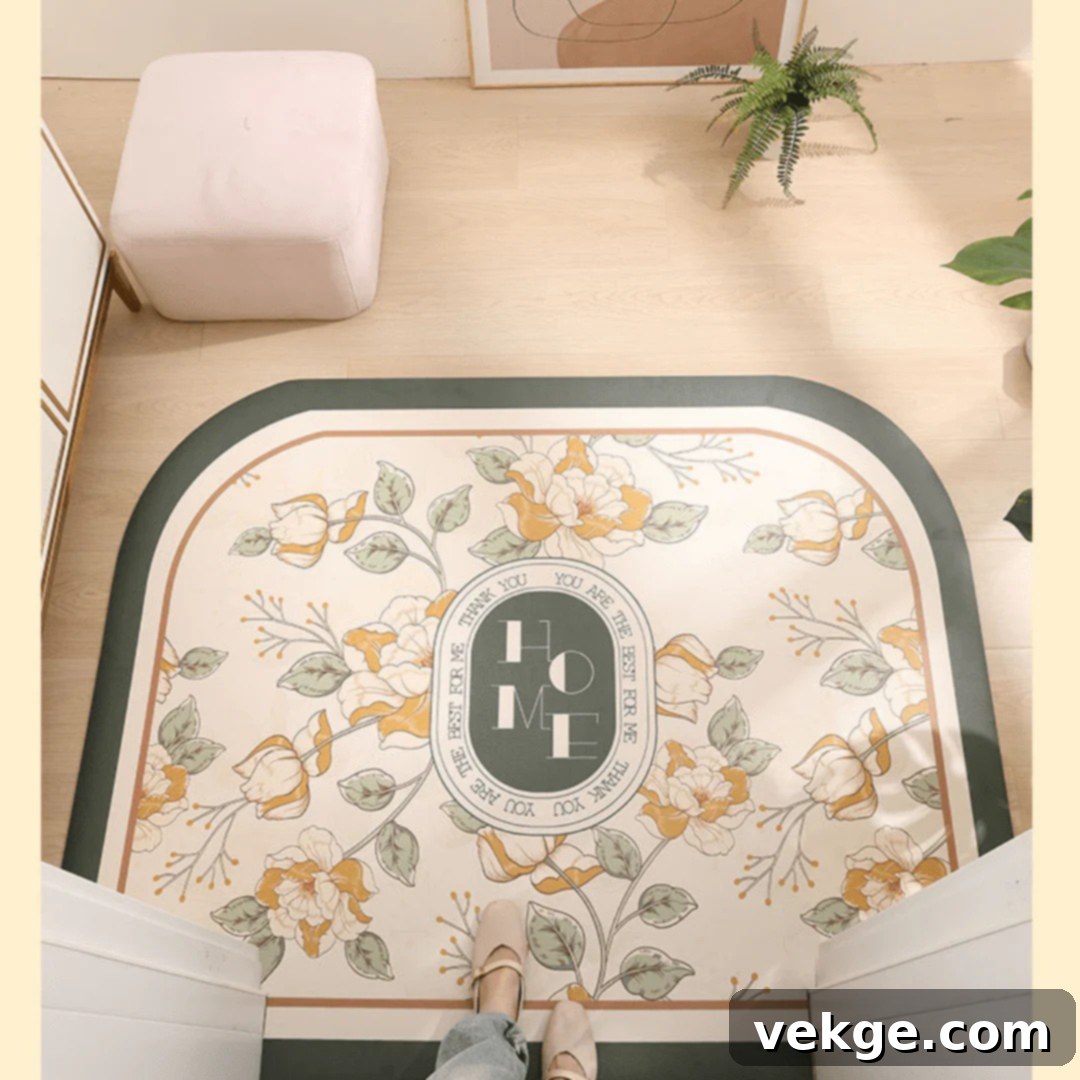Ultimate Guide to a Clean & Dry Home: Mastering Monsoon Season Challenges
There’s an undeniable allure to the monsoon. The sky transforms, the air cools, and the earth exhales a refreshingly clean scent. Gentle rain showers possess an almost therapeutic quality, calming the mind and soul. Yet, as much as we cherish the romanticism of the rains, it’s also true that this season brings a unique set of challenges for maintaining a pristine home. The magic of monsoon often arrives hand-in-hand with muddy footprints, perpetually wet clothes, dripping umbrellas, an unwelcome musty odor, and floors that seem to resist drying.
This seasonal shift truly puts your home maintenance skills to the test. Moisture, the monsoon’s silent companion, quickly accumulates in high-traffic and moisture-prone areas like entryways, bathrooms, and kitchens. The good news is that with a few proactive adjustments and smart choices, you can easily navigate these challenges. Simple yet effective solutions, such as deploying high-quality absorbent floor mats at all entry points and strategic spots throughout your house, along with establishing a dedicated shoe rack by the entrance, can make a monumental difference in preserving your home’s cleanliness and freshness.
If you’ve found yourself searching for “how to keep your home clean during monsoon madness” or “monsoon cleaning hacks,” you’re in the right place. This comprehensive guide offers a collection of practical, tried-and-tested ideas that will help you maintain a sparkling, fresh, and dry home, even amidst the heaviest downpours.

Why a Clean and Dry Home Matters More in the Monsoon
The challenges of monsoon extend far beyond just wet floors. The persistent dampness creates an ideal breeding ground for a host of unwelcome guests: mold, mildew, bacteria, and even various insects. These aren’t just cosmetic issues; they pose significant threats to your home’s structural integrity, your belongings, and most importantly, your family’s health.
Dampness on walls can lead to unsightly stains, peeling paint, and even structural damage to plaster and woodwork. Humidity can cause wooden furniture to swell, warp, and develop a musty odor. More critically, the spores released by mold and mildew are common triggers for respiratory allergies, asthma attacks, and other breathing difficulties, making your home feel unpleasant and potentially unsafe. If areas like the bathroom or kitchen don’t dry quickly, they become perfect havens for germs to proliferate, increasing the risk of infections. Therefore, maintaining a dry and clean environment isn’t merely about aesthetics or basic hygiene; it is absolutely essential for fostering a healthy, comfortable, and safe living space during the monsoon season.
How to Keep Your Home and Surroundings Clean and Dry During the Monsoon
While monsoons and mess often seem inseparable, this doesn’t have to be your reality. You can fully immerse yourself in the joy and beauty of the rain without inviting its muddy aftermath indoors. Here’s a detailed approach to keeping your home immaculate and dry:
1. Simple Habits That Keep the Mess at the Door
The most effective cleaning strategy begins with prevention – stopping dirt and moisture from entering your home in the first place. This entryway protocol is your first line of defense:
- Invest in High-Quality Floor Mats: Place long, highly absorbent floor mats right outside and inside every external door. Choose mats made from materials like coir, rubber, or microfiber that are designed to effectively scrape off mud, trap dirt, and soak up water from shoes and paws. Consider a layered approach: a coarser, scraping mat outside, and a highly absorbent mat inside.
- Establish a Shoe-Free Zone: Position a dedicated shoe rack, tray, or boot cabinet near the entrance. Encourage a strict “no shoes indoors” policy. This simple habit drastically reduces the amount of mud, dirt, and moisture tracked into your living areas. Have a comfortable spot nearby where family members and guests can easily remove their footwear.
- Umbrella Management: Keep an umbrella stand or a simple drip tray right next to the door. This prevents wet umbrellas from creating puddles on your clean floors, which can be both a slip hazard and an invitation for dampness. Ensure the stand is easy to empty and clean.
- Choose Quick-Dry, Anti-Slip Mats: Throughout your home, especially in high-traffic areas and near sinks, opt for mats that are specifically designed for quick drying and have an anti-slip backing. This ensures that any residual moisture doesn’t linger and that your family remains safe from slips and falls on wet surfaces.
- Specialized Kitchen Mats: In the kitchen, where spills and splashes are common, use dedicated kitchen mats for the floor. These are excellent for soaking up cooking spills, steam, and splashes, while also providing a comfortable, anti-fatigue surface and preventing slips on potentially wet floors.
2. Moisture Control Inside: Airflow, Dry Zones & Mat Placements
Once you’ve successfully minimized external dirt and moisture, the next crucial step is actively managing the humidity and dampness that inevitably build up indoors during monsoon.
- Optimize Airflow and Ventilation: On dry or sunny days between showers, open windows and doors to create cross-ventilation, allowing fresh air to circulate and flush out stale, humid air. Utilize exhaust fans in kitchens and bathrooms whenever these areas are in use, and keep them running for some time afterward. Ceiling fans and portable electric fans can also help keep air moving, preventing moisture from settling.
- Strategic Use of Dehumidifiers and Absorbents: Place bowls of natural moisture absorbers like baking soda, camphor, activated charcoal, or silica gel packets in damp corners, closets, and other confined spaces. For larger areas, consider investing in an electric dehumidifier, which can significantly reduce indoor humidity levels and prevent mold growth.
- Target Damp-Prone Zones: Pay extra attention to areas notorious for collecting moisture and developing musty smells: kitchens, bathrooms, laundry rooms, basements, balconies, and closets. Ensure these spaces are well-ventilated and regularly cleaned. In closets, leave a small gap between clothes and the wall, and consider using moisture-absorbing sachets.
- Anti-Skid Mats for Wet Areas: Reinforce safety and dryness by laying anti-skid mats near bathroom doors, inside shower areas, and under sink zones. These mats absorb drips, prevent slips, and protect your flooring from constant moisture exposure.
- Kitchen Floor Mats for Steam and Spills: As mentioned, kitchen mats are indispensable. They don’t just catch food spills; they also absorb moisture from steam during cooking, making the kitchen floor less slippery and more hygienic.
- Reconsider Heavy Carpets: During the monsoon, it’s best to roll up and store heavy wool or shag carpets, as they tend to absorb and retain moisture, leading to mold and unpleasant odors. Instead, opt for lightweight, washable floor mats for the house that can be easily cleaned and dried.
- Regular Mat Maintenance: Always hang out or lay flat wet mats to dry completely after use or washing. Never leave damp mats bunched up, as this accelerates mold and mildew growth. Consider having multiple sets to rotate.
3. Stick to a Quick Daily Cleaning Routine (It Pays Off)
You don’t need to dedicate hours to deep cleaning every single day. The true secret to managing monsoon mess lies in consistent, small habits. A focused 15-20 minute daily routine can make an immense difference in keeping your home fresh, hygienic, and free from monsoon-related issues.
- Daily Floor Mopping with Disinfectant: Mop your floors daily, paying special attention to high-traffic areas near the entrance, in the kitchen, and any damp corners. Use a good quality disinfectant like phenyl, a diluted vinegar-water solution, or a gentle antibacterial cleaner. These areas are most susceptible to grime, mud, and bacteria buildup, making daily disinfection crucial for a healthy home.
- Utilize Separate Cleaning Tools: To prevent cross-contamination, use separate mops, cloths, and sponges for different zones of your home – for instance, one for the bathroom, one for the kitchen, and another for living areas. During monsoon, bacteria thrive in damp environments, and using the same wet mop across the house can quickly spread germs, turning a cleaning effort into a potential health hazard.
- Consistent Surface Dusting: Dust surfaces regularly, including those less visible spots. Behind furniture, on top of cabinets, under the couch, and window sills are sneaky areas that accumulate moisture and dust, creating perfect conditions for mildew to grow unchecked. Regular dusting removes these particles and allows surfaces to dry more effectively.
- Frequent Mat Cleaning: Doormats and kitchen mats are your front-line defense, so they get dirty quickly. Hand-wash or machine-wash them (checking material instructions) every few days. A practical tip is to have at least two sets of mats for each location, allowing one set to dry thoroughly while the other is in use.
- Declutter Relentlessly: Monsoon is definitely not the season for “organized chaos.” Shoes, bags, newspapers, magazines, clothes, or any other items left scattered on the floor or furniture will absorb moisture, take ages to dry, and inevitably contribute to that pervasive musty smell. Keep surfaces clear and clutter to a minimum to improve air circulation and reduce moisture traps.
- Switch to Quick-Dry Furnishings: Replace heavy curtains, throws, and rugs with lighter, washable alternatives. Opt for materials like microfiber, cotton-poly blends, or sheer fabrics that dry rapidly, even on perpetually cloudy days. If your cushions have removable covers, wash them every 10-15 days to keep them fresh and free from dampness.
- Wipe Down Frequently Touched Surfaces: Regularly wipe down doorknobs, light switches, kitchen counters, faucet handles, and appliance surfaces. These areas are prone to collecting moisture and germs, especially when hands are frequently wet or damp from the monsoon air.
- Embrace Natural Air Fresheners: Combat damp, musty odors with natural solutions. Place dried lavender sachets, bowls of coffee grounds, orange peels, or essential oil diffusers (using anti-bacterial oils like tea tree or eucalyptus) in rooms. These are far more effective and healthier than relying on synthetic sprays that often just mask odors.
- Check for Leaks and Damp Spots: Regularly inspect walls, ceilings, and windows for any signs of water leaks or dampness. Even minor leaks can lead to significant mold growth and structural damage if not addressed promptly. Repair any issues immediately.
By integrating these simple yet powerful routines into your daily life, the monsoon season will transform from a period of constant struggle against mess and dampness into a time you can truly enjoy, with a home that remains fresh, clean, and inviting.
Small Changes, Big Impact
Maintaining a clean and dry home during the rains isn’t about striving for unattainable perfection; it’s about making smart, strategic choices. Something as seemingly minor as choosing the right floor mat can dramatically reduce your cleaning effort by half. A well-chosen mat acts as a multi-functional barrier: it keeps external dirt out, efficiently soaks up moisture from wet shoes, and crucially, prevents dangerous slips – all in one go.
So, if you’re contemplating a few essential upgrades this monsoon season, consider starting with your floors. Explore the extensive Home Essentials collection to discover the ideal floor mats for your home, whether you’re looking for elongated runners, vibrant designs, or heavy-duty options built for high-traffic environments. Investing in these small, smart solutions will ensure your home remains a sanctuary of comfort and cleanliness, no matter how much it pours outside.
